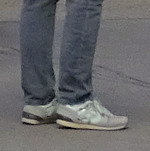Part 3 of our walking tour of Vienna leaves the Hofburg and wanders along a section of the giant Ringstrassen boulevard with its parks, museums, and important civic buildings.
Continue reading for route info, special tips, details on the main locations you walk past, plus some information on guided options.
- If you keep moving, the 4-part route takes around 1½ hours
- Book a guided tour* for your visit
- See also:
The Ring route
We ended Part 2 of the tour by leaving the Hofburg complex through the monumental Burgtor entrance. Ahead of us is the Ring boulevard that encircles the heart of Vienna.
But before we get to the Ring itself and all the wonders it holds…
The Burggarten

(The Burggarten park)
Instead of going through the Burgtor, consider first walking left, which takes you around the end of the Neue Burg (the wing of the Hofburg that’s been on your left as you crossed Heldenplatz square).
The rear of the Neue Burg has the rather nice Burggarten park, created on land made unexpectedly available for development in the early 1800s; Napoleonic troops used the fortifications that previously stood there for ballistics practice.

(A floral tribute to a musical genius)
The corner of the Burggarten you emerge into has the popular Mozart monument with (in the right season) its treble clef flower bed.
(The opposite corner of the Burgarten takes you to the Albertina art museum from an earlier part of our tour.)
After saying hello to Wolfgang Amadeus, retrace your steps and walk under the Burgtor and toward the large road that crosses in front of you.
On to the ring

(Looking along The Ring)
That road is a section of the mighty Ring: an unmistakable continuous series of roads built after the city’s outer fortifications came down in the mid-1800s.
The Ring follows a similar path to the old city walls; the authorities sold some of the real estate flanking the open boulevard and used the rest for colossal urban development projects.
As a result, many stylish 19th century townhouses and monumental public buildings line the route. We shall walk part of the Ring clockwise to take in some of the best sights.
(If you walk in the other direction, you eventually find yourself back at the Staatsoper where our tour began.)
Museums & Maria Theresa
Turn right onto the Ring’s pedestrian paths. These sometimes cross or join cycle routes so keep an eye out for two-wheeled traffic.
Which side of the Ring you walk along depends on how close you want to get to different attractions, and you may find yourself swapping sides as required. But start off by crossing the road to reach our first Ring stop.
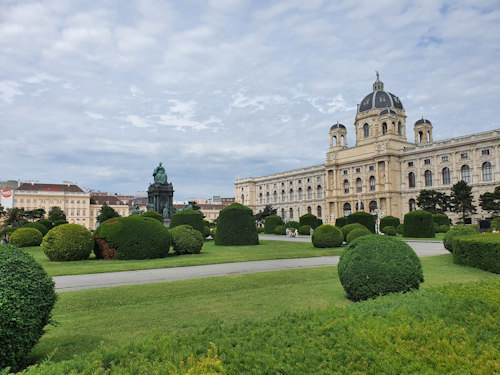
(The building on the right is the Naturhistorisches Museum)
Maria-Theresien-Platz is a landscaped square immediately opposite the Burgtor with two large museums facing each other and a giant monument in the centre.
The museum on your left as you look at the square from the road is the 1891 Kunsthistorisches Museum (KHM) building, full of art treasures from the past. The interior decoration is an artwork in its own right (some of it done by Gustav Klimt).
Tip: most people visit the KHM for the paintings by a who's who of European art history, but the Kunstkammer chamber of wonders collection is equally breathtaking with some quite unique pieces
The museum on your right is the 1889 Naturhistorisches Museum (NHM) building: Vienna’s Natural History Museum and equally magnificent inside as its twin opposite.
Inevitably, the NHM is a top location for entertaining kids, not least due to its dinosaurs and interactive displays. Strangely, the museum also has two of Vienna’s most notable artistic treasures: the Venus von Willendorf and the Gemstone Bouquet.
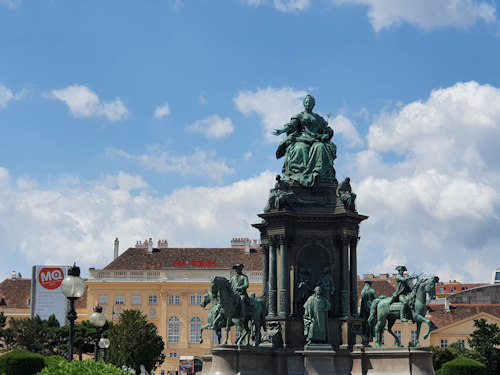
(Maria Theresa looks out over her former dominion)
The large 1888 monument is to Empress Maria Theresa (1717-1780), whose accession to the various Habsburg thrones ruffled a few male feathers and led European competitors to try and muscle in on her territories.
Unfortunately for our affronted masculine nobility, the Empress proved a remarkably successful leader. The statues and reliefs around the monument represent key personalities from her reign. See if you can spot Haydn and Mozart, for example.
Monument of the Republic
Stay on this side of the Ring and walk past the end of the Natural History Museum to discover the Monument of the Republic.

(Monument to the first Austrian republic; we live in the second one, established after WWII)
This commemorates the proclamation of the first republic on November 12th, 1918, immediately after the end of WWI, which also saw the demise of the ruling Habsburg monarchy.
The busts are of three key politicians behind that process:
- Jakob Reumann (a future mayor who also played a key role in Vienna’s legendary social housing initiative)
- Ferdinand Hanusch (a prime mover behind the development of worker-friendly social policies)
- Viktor Adler (the acknowledged founder of the Austrian social democracy movement)
Parliament
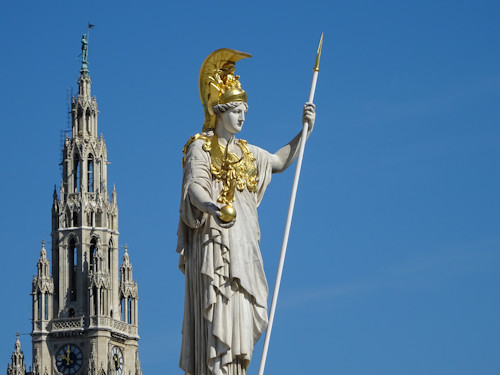
(Athena guards the front of parliament)
Rather appropriately, walking past the monument brings you to Austria’s Hellenic-style working parliament building from the early 1880s.
Parliament has just reached the end of a huge renovation programme, so what you see is remarkably pristine for a building that’s almost 150 years old.
You can take a tour (free and in English) of the interior architecture and visit a public café or restaurant inside.
By now, you’ll have worked out that all those old-looking buildings along the Ring “only” date back to the second half of the 1800s.
Architects of the time and (more importantly) the people who financed their projects largely favoured the historicism approach, where you design new buildings to match old architectural styles. Then along came Vienna Modernism to mix things up a little.
The Volksgarten
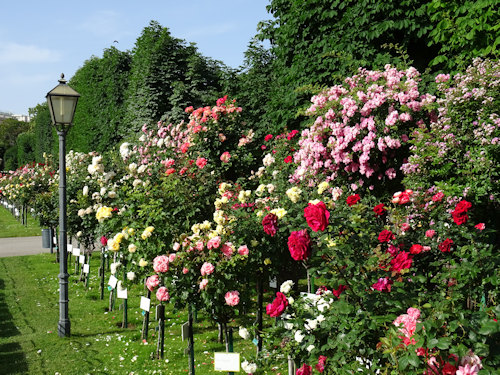
(The rose garden)
Opposite parliament on the other side of the Ring is the 1823 Volksgarten, another park that owes its existence to the destructive departure of Bonaparte’s troops from Vienna. Thanks, Napoleon!
The long stretch of the park that lines the Ring has more roses than a bumper pack of Valentine’s Day cards. The blooms from hundreds of varieties create a blaze of colour in late spring and early summer.
Tip: pop into the Volksgarten for two bonus treats: the small Theseus Temple (looks lovely at night) and the quiet memorial to Empress Elisabeth (which even many Viennese have forgotten about)
The Rathaus

(The tallest tower of the Rathaus)
Continue past Parliament to reach another more conventional park (the Rathauspark) and city hall: the neogothic 1883 Rathaus, whose central tower peeks through the trees as you approach.
Always keep on eye on the square (the Rathausplatz) in front of the Rathaus. This location often hosts big events, such as an open-air film festival through summer, the huge Christkindlmarkt Christmas market (no prizes for guessing when this takes place), and an ice skating extravaganza in late winter.
Tip: if you walk across the park or square to the Rathaus and then go left you find a lovely little Café-Konditorei that counted Empress Elisabeth among its customers (her name pops up a lot in Vienna)
The Burgtheater

(The Burgtheater seen from the Rathausplatz)
And our final stop on this Ring part of the walking tour is the 1888 Burgtheater opposite the Rathausplatz.
This is essentially Austria’s national theatre. The institution itself dates back further than the relatively new Ring-side premises.
Despite the theatrical tradition, the Burgtheater has its own special place in art history, since its staircase frescoes feature early works by none other than Gustav Klimt. You can see his efforts on one of their guided tours.
Tip: although a German-language theatre, the Burg (as locals call it) provides English subtitles for selected productions via its free PROMPT app
The Burgtheater marks the point where we veer away from the Ring to return to the old town in Part 4 of our walking tour: old Vienna and the cathedral.
